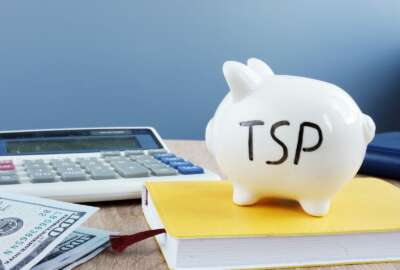
Are federal bureaucrats 9 to 5 drones or smart investors? Take a test
Many of the nation’s smartest rank-and-file retirement investors may not be on Wall Street but rather in the cubicle next to yours, in your carpool or even in the...
Where can you find many of the nation’s smartest rank-and-file investors? I don’t mean people on Wall Street or operators of hedge funds, but real people for whom investing, while vital toward their retirement, is a sideline. Where do you look?
If not in the mirror, maybe it’s the lady in the next cubicle at work, or the guy in your carpool — Richard or Robert something — who is late a couple of times each week? But who played it cool during the Great Recession and is now sitting on an optional retirement nest egg between $750,000 and almost $7 million? Do any of them, or you have more than $1 million in your Thrift Savings Plan account, and if so how many?
At the end of March there were 32,638 active or retired feds with TSP account balances of $1 million or more. That was a one month increase of 9,540 investors. In April the average TSP account balance for FERS investors was $145,423. The average for CSRS investors was $153,391.
Most people who keep up with financial news know the stock market is overdue — 10 years and one month to be precise — for a nosedive. A major correction of 20 percent or more is expected, and we came very, very close in December. Some “experts” believe it has already begun. Last Wednesday’s column and companion Your Turn radio show dealt with timing (or not) the stock market, knowing when to get out and, equally important, when to return. We covered how to actually buy low and sell high instead of doing the opposite, which is more common.
Ask a colleague who fled the TSP’s stock indexed C and S funds during the recession and put all or most of the nest egg in the treasury securities G fund. And ask who missed the big run up in stocks over the last 10 years waiting for the right time to return.
The column and show had advice from Arthur Stein, a Washington, D.C.-area financial planner. Most of his clients are current or retired feds and several are even TSP millionaires. He says timing the stock market accurately is much more luck than skill. Stein said that May was a “dismal” month for investors but it was still just one month. Basing buy-sell decisions on short-term data is not a good way to invest, he said.
Making a decision about future performance based on past, and especially short-term performance can be very tricky — and not rewarding.
A reader, M.M., sent the following “test” which they said will help most people with the futility of investing based on short-term data. Try your skill.
And if you are a bona fide TSP millionaire we’d love to share your story of how you got there, how long it took and what advice you have now for people investing for the future.
Nearly Useless Factoid
By Amelia Brust
General Mills introduced their Fruit Roll-Ups snacks in the 1980s, but they were inspired by the Syrian treat called amardeen, which is a sheet of dried apricot paste. Amardeen was brought to New York at the turn of the 20th century by Syrian immigrants, and in the 1960s the Lebanese Shaloub family started selling the sheets at their confectionery shop under the name JORAY rolls. Joseph Shaloub & Son are still in business, and still selling their trademark fruit rolls.
Source: Thrillist
Copyright © 2024 Federal News Network. All rights reserved. This website is not intended for users located within the European Economic Area.
Mike Causey is senior correspondent for Federal News Network and writes his daily Federal Report column on federal employees’ pay, benefits and retirement.
Follow @mcauseyWFED





